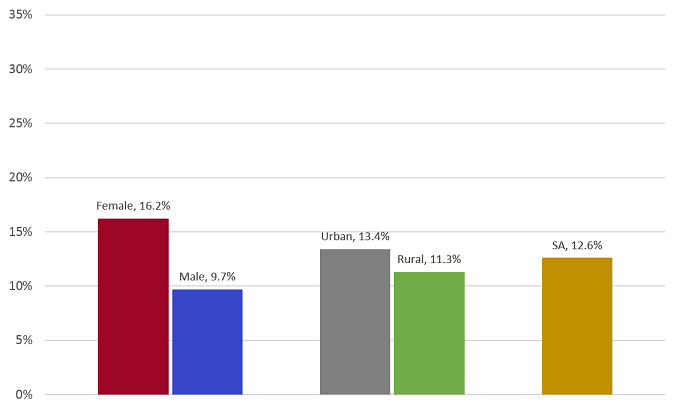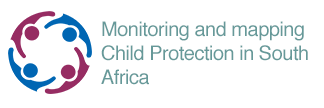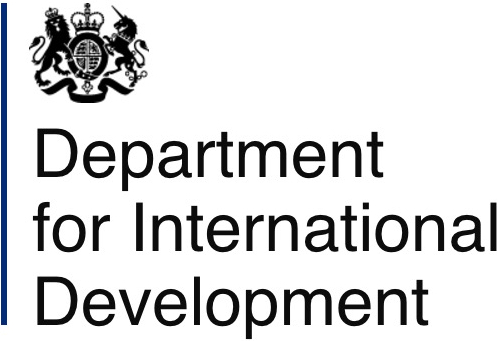 Mental violence
Mental violence
Adolescents experiencing emotional abuse
Date: March 2018Definition
This indicator is based on the question posed in the 2016 Optimus prevalence survey: "At any time in your life, did you get scared or feel really bad because grown-ups (adults) in your life called you names, said mean things to you, or said they didn't want you?" Some 13% of adolescents indicated that they had experienced this in their lifetime. Data

Notes
1. Participants in this study were adolescents aged 15 to 17 years old.
Source
Artz L, Burton P, Ward C et al (2016) Optimus Study South Africa: Technical Report. Sexual Victimisation of Children in South Africa. Final Report of the Optimus Foundation Study: South Africa. Zurich: UBS Optimus Foundation (p98-99). Household weighted data, interviewer-administered questionnaire.
What do the numbers tell us?
Little is known about the prevalence of emotional abuse in South Africa, with the question included in the 2016 Optimus study on child sexual victimisation providing one of the few national estimates. A community-based study in Mpumalanga and the Western Cape reported that 35.5% of children experienced emotional abuse, most commonly by primary caregivers, followed by relatives and teachers.1 This study also highlighted how children experience multiple forms of violence that overlap.
___________________________________________________________________________________________________________
___________________________________________________________________________________________________________
1 Meinck F, Cluver L, Boyes M & Loening-Voysey H (2016) Physical, emotional and sexual adolescent abuse victimisation in South Africa: prevalence, incidence, perpetrators and locations. J Epidemiol Community Health, 70:910-916.
Technical notes
The 2016 national prevalence survey on child sexual victimisation consisted of a population-based survey and an accompanying school-based survey. The household survey was based on a multi-stage stratified sample designed to produce a nationally representative sample and which used province, geographic area (urban/rural) and race group as stratification variables (see the technical study report for more detail). The schools were clustered according to the Enumerator Areas (EAs) identified in the household survey; as a result the data is not representative of the school population.
One adolescent aged 15 – 17 years was interviewed per selected household. Active informed consent was obtained from parents and informed assent was obtained from the adolescent. In the school-based survey, a total of 30 interviews were completed (10 learners each from grades 10 to 12) per school. Passive parental consent was sought at schools. The household sample consisted of 5 631 participants (refusal rate: 5.2%), while the school-based survey comprised 4 086 learners (refusal rate: 3.9%).
In reporting the findings, we have drawn on the nationally representative household survey data. Where possible, we report the findings from the self-administered component as we consider them to be more reliable given the anonymity involved. There does appear to have been a greater willingness to disclose in the self-administered component, with rates reported in this component generally being higher than those reported in the interviewer-administered component.
One adolescent aged 15 – 17 years was interviewed per selected household. Active informed consent was obtained from parents and informed assent was obtained from the adolescent. In the school-based survey, a total of 30 interviews were completed (10 learners each from grades 10 to 12) per school. Passive parental consent was sought at schools. The household sample consisted of 5 631 participants (refusal rate: 5.2%), while the school-based survey comprised 4 086 learners (refusal rate: 3.9%).
In reporting the findings, we have drawn on the nationally representative household survey data. Where possible, we report the findings from the self-administered component as we consider them to be more reliable given the anonymity involved. There does appear to have been a greater willingness to disclose in the self-administered component, with rates reported in this component generally being higher than those reported in the interviewer-administered component.
Strengths and limitations of the data
A strength of the prevalence survey is that it captures incidents that are not reported to the authorities and therefore would not appear in administrative data. The Optimus survey also drew on different sites (home and school) and different methods of collecting the data (interviewer and self-administered questionnaires), and shows how the approach taken can influence the levels of reporting.
A potential limitation was the ethical requirement of obtaining parental consent in the household survey. Consent and informed assent is essential to research ethics, but there is a concern that abusive parents may have refused consent, thus biasing the results.
A further limitation is that the data cannot be disaggregated beyond provincial level, and in most cases the small numbers reporting various forms of abuse makes disaggregation even to this level difficult. Obtaining data at a lower level (e.g. district) is important for understanding where violence against children is most prevalent and which groups of children are most at risk.
Lastly, this survey fills an important data gap in understanding the prevalence of sexual violence against children (in the context of other forms of violence) but it is not conducted on a regular basis and therefore does not provide surveillance data needed to monitor trends over time.
A potential limitation was the ethical requirement of obtaining parental consent in the household survey. Consent and informed assent is essential to research ethics, but there is a concern that abusive parents may have refused consent, thus biasing the results.
A further limitation is that the data cannot be disaggregated beyond provincial level, and in most cases the small numbers reporting various forms of abuse makes disaggregation even to this level difficult. Obtaining data at a lower level (e.g. district) is important for understanding where violence against children is most prevalent and which groups of children are most at risk.
Lastly, this survey fills an important data gap in understanding the prevalence of sexual violence against children (in the context of other forms of violence) but it is not conducted on a regular basis and therefore does not provide surveillance data needed to monitor trends over time.






 The SAECR 2024 tracks trends on the status of children under 6.
The SAECR 2024 tracks trends on the status of children under 6. 








